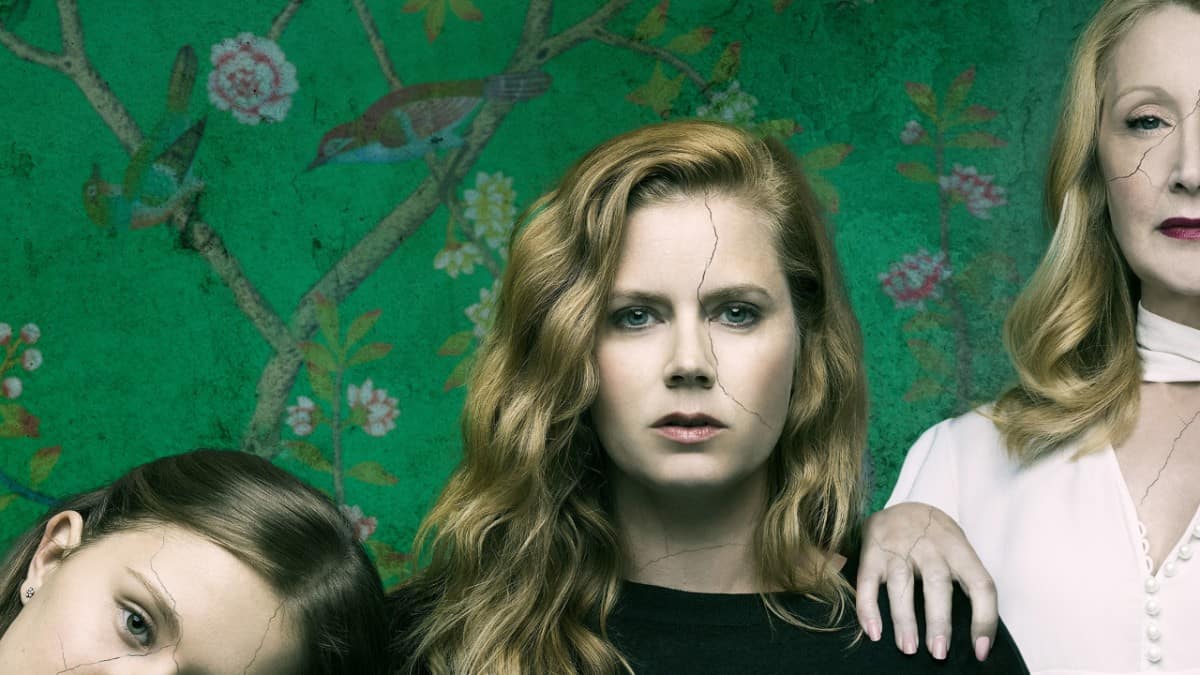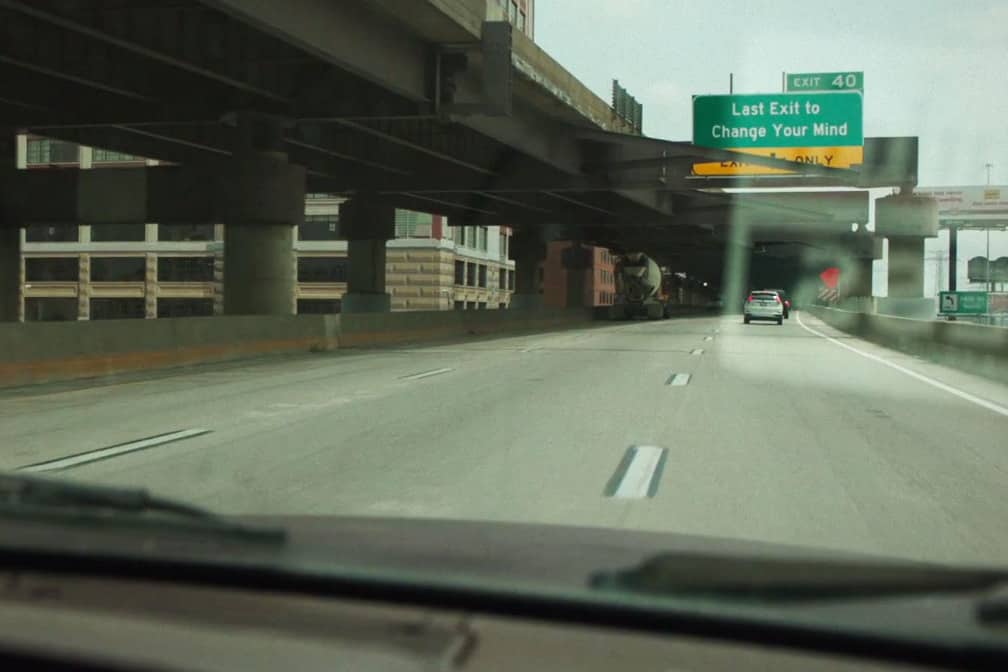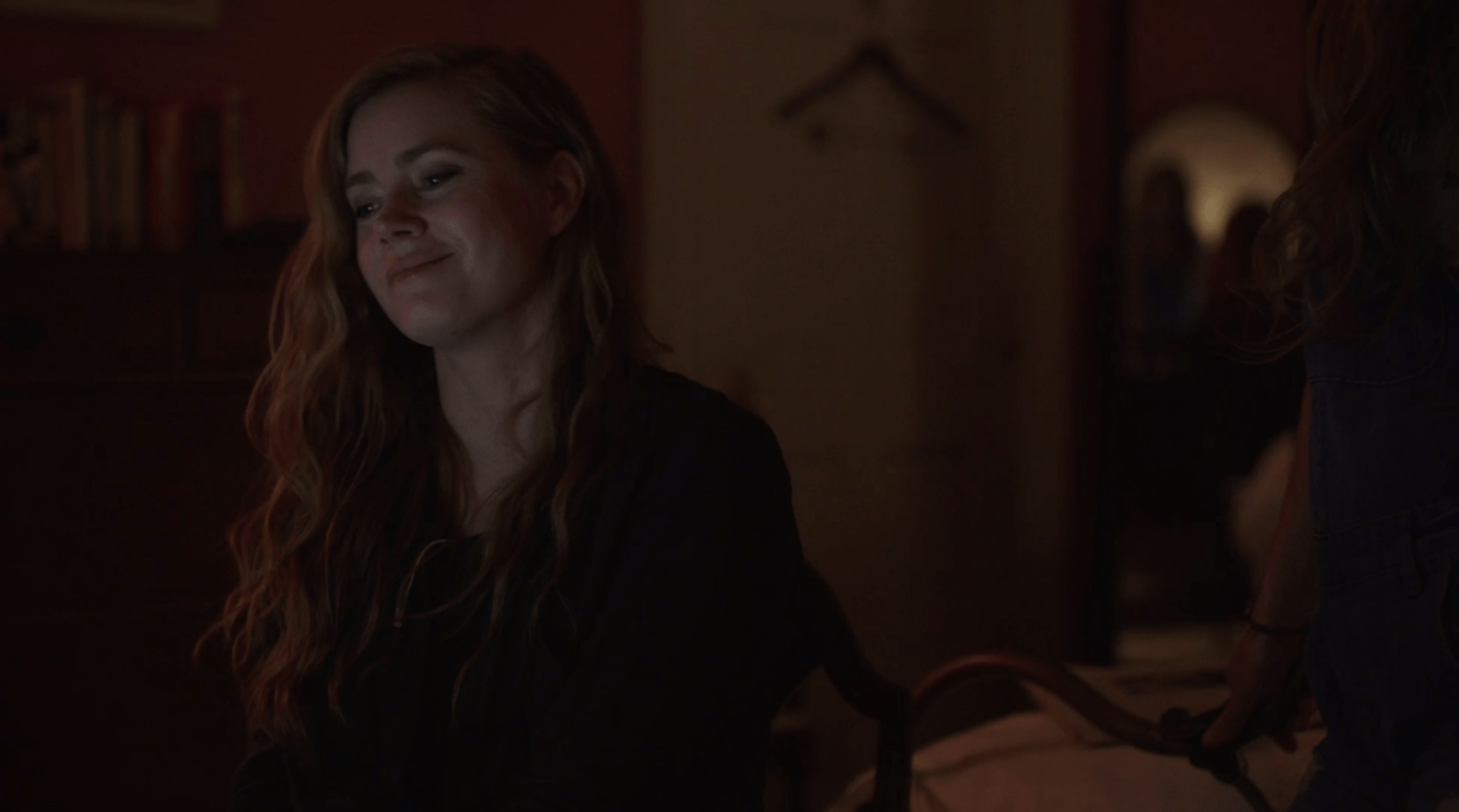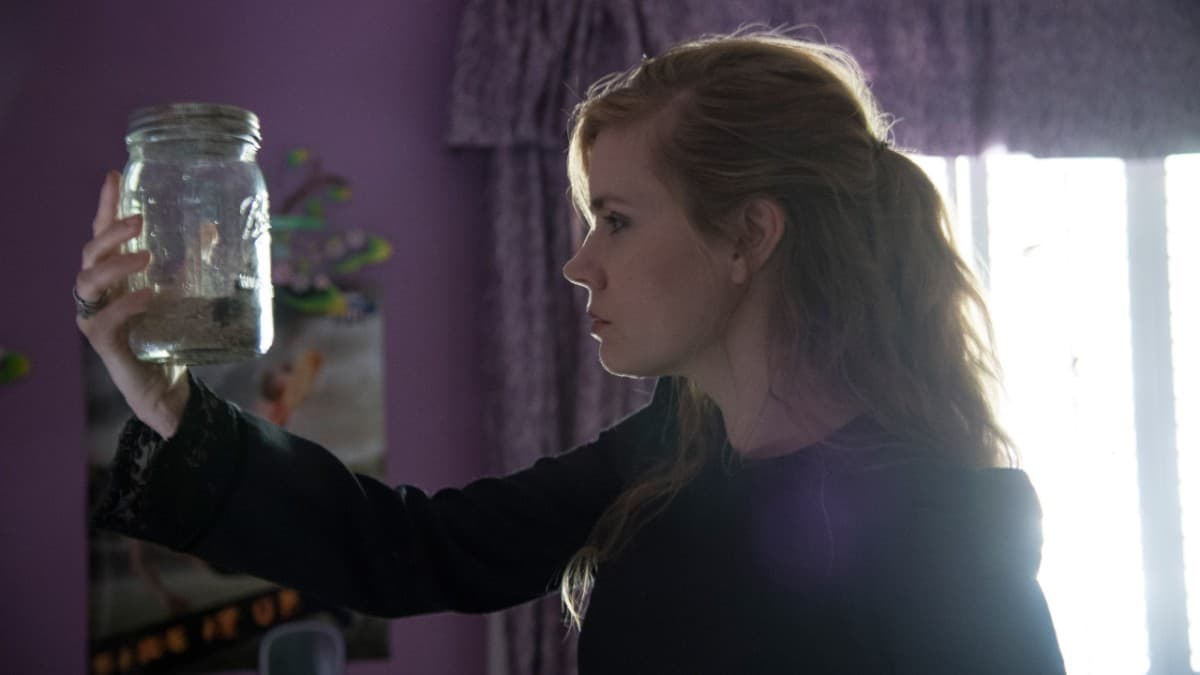
‘SHARP OBJECTS’ – Episode 1 “Vanish” Review
HBO has again this summer presented audiences with a limited prestige series based on a novel. While it logistically takes the Big Little Lies slot from 2017, Sharp Objects tone, subject matter, themes, and stylistic flourishes set it up more as this year’s Twin Peaks or True Detective: a mystery that’s sure to keep viewers guessing for weeks, and critics and fans talking for years.
[AdSense-A]
The first few minutes of the episode establish the basic story: our protagonist, journalist Camille (Amy Adams), returns to her small hometown in southern Missouri to cover the disappearance of a young girl. It also establishes Sharp Objects’ powerful visual vocabulary: brief cuts that indicate Camille’s thoughts, seamless transitions between her past and present, and the use of words in the scenery to indicate her state of mind.
The latter is a clever solution for adapting a unique element of the source material by Gillian Flynn (Gone Girl), which is told from Camille’s point of view. The former also echoes important parts of the story: Camille’s history with the town, the past trauma exhumed by current events, and the strained relationship with her mother, Adora, played by Patricia Clarkson (House of Cards, Pieces of April).
Adams’ other primary scene partners promise additional fireworks. First, she meets state investigator Richard, played by The Mindy Project’s Chris Messina, although DTB readers may know him from Devil or Argo. Episode 1 sets up Camille and Richard’s relationship, with one driven by the need to get a good story, and the other desperate for companionship.
Second, Camille’s relationship with her half-sister Amma is less accessible. In only a few scenes, Amma is a complex character, new comer Eliza Scanlen wears Amma in the same way the character comfortably shifts between multiple personas. Her trajectory with Camille, and in the story as a whole, could go almost anywhere. In their first moments alone, Amma tells Camille, “I’m incorrigible, too. Only [Adora] doesn’t know it.”
Like this year’s horror darling Hereditary, relatable relationships and grief fuel the events of Sharp Objects. Both are enhanced by visual detail, including miniature architecture and oppressive vegetation. Fans of Twin Peaks and season 1 of True Detective, will notice similar landscapes and other haunting locations, and the dichotomy of small-town life.
While the shared fuse of violence against females is a tired plot device, Sharp Objects sets itself apart by making women and their complex relationships and psychology the explosive charge for of this version of the trope. The police are still men, but they come off as helpless and clueless as the audience, mere witnesses to the horror of unfolding events and, like Camille’s step-father Alan (Henry Czerny), are limp ornamentation amongst the brightly flowering female ensemble.
The cliche plot device isn’t the show’s only issue. Adam’s dialect is inconsistent, although that’s believable for an adult returning to a rural area after years of journalism school and urban living. More concerning is how the episode treats the town’s black population as set dressing (more on that as the series develops) and evokes homophobia with little more than an uncomfortable look or ironic comment from Camille.
Sharp Objects’ strength, other than its effective and modern visual storytelling, is as a multi-generational family drama. Watchers will enjoy solving the “who done it” along with the characters, but the real twists promise to come between Camille and the women in her life, including her past self and the other children that Wind Gap has killed.



